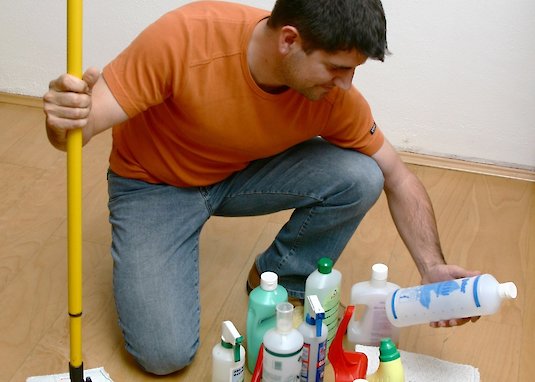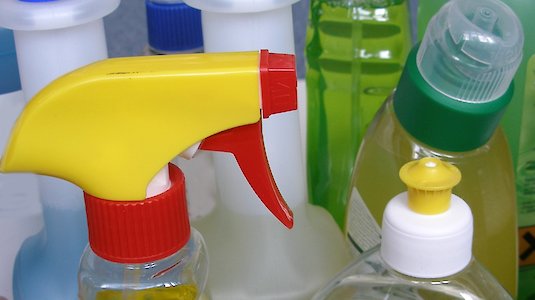Save stain removal
The beginnings of ecologisation in the 1980s are inseparably linked to the demand for environmentally friendly cleaning and washing agents. The colourful and foaming rivers and lakes had to disappear, and with them many products with questionable ingredients from the shops.
Especially in the cleaning & washing sector, a lot has changed enormously over the last 30 years. Definitely in the right direction, but also with alarming new trends. Thanks to more sophisticated recipes and high-quality sewage treatment plants, cleaning and washing agents no longer lead to the over-fertilisation of waters. Instead, new substances are added to the products, with equally negative effects on the environment. Whiter than white, hygienic instead of clean. If you believe the advertising for toilet cleaners, for example, the hygienic standards in our toilets are comparable to those in an intensive care unit.
Cleanliness and disinfection are two fundamentally different things
Sustainable thinking people are not filthy and want it clean. However, this does not mean that you need to use chemicals and disinfectants in the toilet. Doctors understand hygiene as preventive measures for keeping body and soul healthy. Many of us think of the pungent smell of chlorine and ammonia when we think of hygiene. We often mistakenly equate hygiene with disinfection. Disinfection is neither necessary nor useful in private households. Normal household cleaners also provide hygienic cleanliness. Active ingredients for disinfection also kill the bacteria that are useful for us humans and weaken the immune system. Therefore hands away from cleaning agents with the inscription: disinfecting, bactericidal, biocidal, anti-bacterial, with active chlorine and cleans "hygienically".

The nonsense with disinfectants in household cleaners is taken into account with the Ecolabel guideline "Detergents". Awarded products should only contain biocides for preservation. Furthermore, the guideline tests the toxicity to water organisms, the biodegradability of washing-active substances and prohibits questionable ingredients such as fragrances. Thus, no fragrances that are harmful to health (e.g. polycyclic musk compounds) may be contained. These fragrances are highly toxic to aquatic organisms and damage the nervous system. In humans, the immune system is damaged and it can lead to allergic reactions.
What you really need for thorough cleaning
More and more consumers want to protect the environment and health. The increasing demand has a stimulating effect on the supply of appropriate washing and cleaning agents. The most gentle way to do this is to avoid the use of harmful chemicals when cleaning.
An all-purpose cleaner and a soft sanitary cleaner are always sufficient for hygienic conditions in the toilet and bathroom. With sanitary cleaners, look out for products based on formic, citric or tartaric acid. Keeping the bathroom dry after use deprives germs and fungi of their optimal living conditions. In the kitchen it is sufficient to keep the refrigerator, work surfaces and chopping boards, but also cloths, sponges and dish towels clean and dry. Kitchen cleaners with disinfecting agents are unnecessary. Neutral cleaners or scouring agents without added chlorine are completely sufficient. Finally, window cleaning agents based on alcohol ensure a clear view.
Databases on the Internet facilitate the search for ecological detergents and cleaning agents. All products bearing the Austrian and European Ecolabel can be found on this website.
The new database www.umweltberatung.at/oekorein-datenbank of die umweltberatung lists 300 ecological cleaning agents for use at home or for company and administrative buildings.
